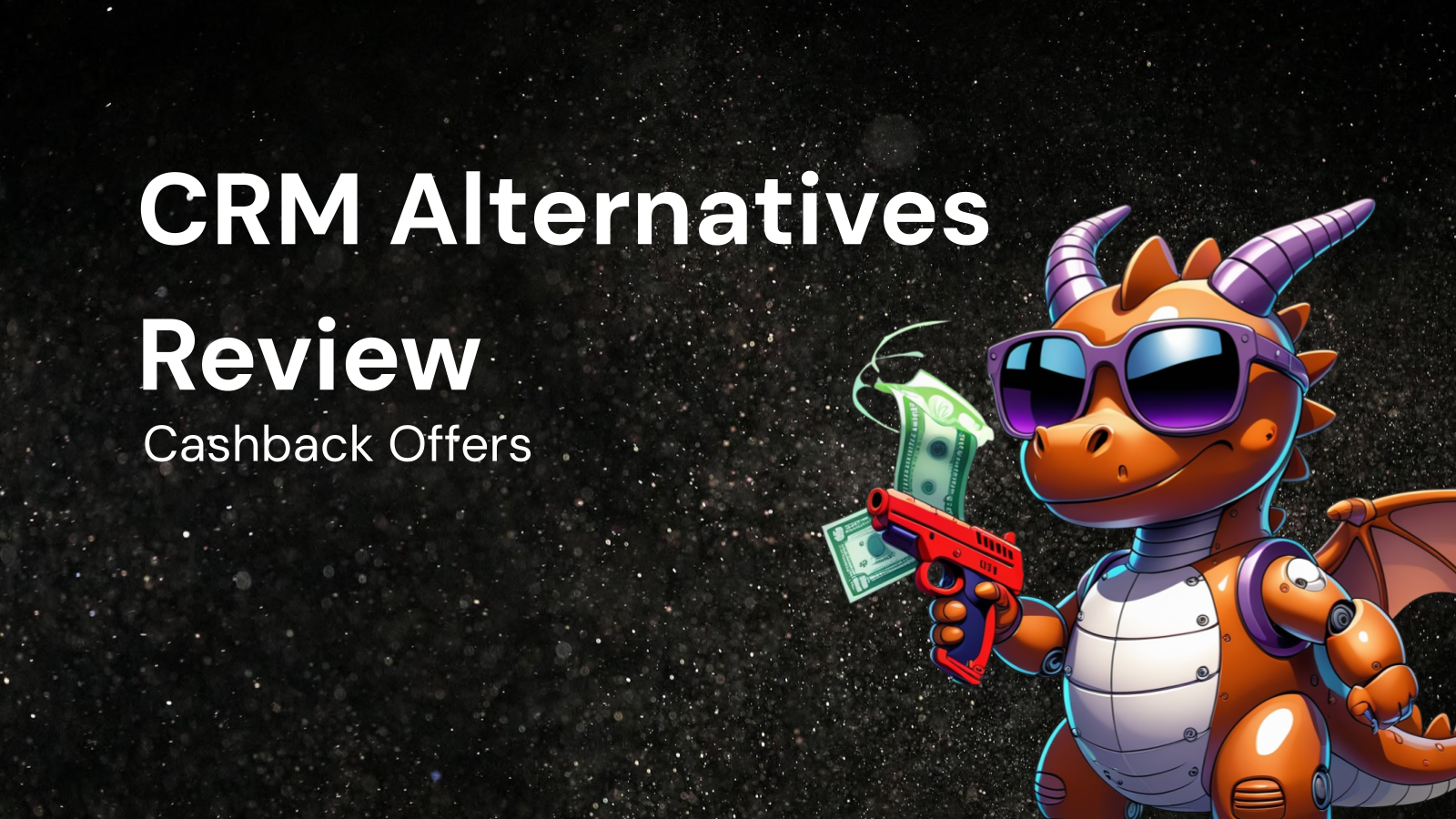CRM Tutorial: Your Step-by-Step Guide

CRM Tutorial: Your Step-by-Step Guide to Mastering Customer Relationships
In today's competitive business landscape, building and nurturing strong customer relationships is paramount to success. A Customer Relationship Management (CRM) system is no longer a luxury, but a necessity for organizations of all sizes. It's the central hub for managing interactions with current and potential customers, allowing you to streamline processes, improve communication, and ultimately, boost profitability.
This comprehensive tutorial will guide you through the world of CRM, providing a step-by-step approach to understanding, implementing, and maximizing the benefits of this powerful tool. Whether you're a business owner, sales manager, or simply curious about CRM, this guide will equip you with the knowledge you need to navigate the landscape and choose the right solution for your needs.
What is CRM? Unveiling the Core Concepts
At its core, CRM is a strategy for managing an organization's interactions with customers and prospects. It involves using technology to organize, automate, and synchronize sales, marketing, customer service, and technical support. The overarching goal is to improve customer satisfaction, loyalty, and ultimately, drive revenue growth.
Think of CRM as a digital Rolodex on steroids. Instead of just storing contact information, it captures a wealth of data about each customer, including:
- Contact Information: Names, addresses, phone numbers, email addresses, social media profiles.
- Interaction History: Past communications, support tickets, sales opportunities, website visits, email interactions.
- Purchase History: Products or services purchased, order dates, payment information.
- Demographic Data: Age, location, industry, job title.
- Notes and Attachments: Relevant conversations, meeting summaries, contracts, and other important documents.
By centralizing this information, CRM provides a 360-degree view of each customer, enabling businesses to personalize interactions, anticipate needs, and build stronger relationships.
Why is CRM Important? The Benefits Unveiled
Implementing a CRM system offers a multitude of benefits that can significantly impact your business's bottom line. Here are some key advantages:
- Improved Customer Relationships: CRM empowers you to understand your customers better, leading to more personalized and meaningful interactions. This fosters loyalty and reduces churn.
- Enhanced Sales Productivity: By automating tasks like lead management, follow-ups, and sales reporting, CRM frees up your sales team to focus on closing deals.
- Streamlined Marketing Efforts: CRM allows you to segment your audience, target them with relevant messages, and track the effectiveness of your marketing campaigns.
- Improved Customer Service: With instant access to customer information, your support team can resolve issues faster and more efficiently, leading to higher customer satisfaction.
- Data-Driven Decision Making: CRM provides valuable insights into customer behavior, sales trends, and marketing performance, enabling you to make informed decisions that drive business growth.
- Centralized Information: A single source of truth for all customer data eliminates silos and ensures that everyone in your organization is on the same page.
- Increased Revenue: By improving customer relationships, sales productivity, and marketing effectiveness, CRM ultimately contributes to increased revenue and profitability.
Types of CRM: Choosing the Right Fit
CRM systems are not one-size-fits-all. There are different types of CRM solutions designed to meet the specific needs of various businesses. Understanding these types is crucial for selecting the right CRM for your organization.
- Operational CRM: Focuses on automating sales, marketing, and customer service processes. It typically includes features like lead management, contact management, marketing automation, and service desk automation.
- Analytical CRM: Focuses on analyzing customer data to identify trends, predict behavior, and optimize business strategies. It typically includes features like reporting dashboards, data mining tools, and predictive analytics.
- Collaborative CRM: Focuses on facilitating communication and collaboration between different teams within the organization. It typically includes features like shared calendars, document sharing, and project management tools.
Beyond these general categories, CRM systems can also be classified based on deployment method:
- Cloud-Based CRM: Hosted on the vendor's servers and accessed through the internet. This is the most popular option due to its affordability, scalability, and ease of use.
- On-Premise CRM: Installed on your own servers and managed by your IT team. This option offers greater control over data security and customization but requires significant upfront investment and ongoing maintenance.
A Step-by-Step Guide to Implementing CRM
Implementing a CRM system can be a daunting task, but by following a structured approach, you can ensure a successful implementation. Here's a step-by-step guide:
Step 1: Define Your Goals and Objectives
Before you even start evaluating CRM solutions, it's crucial to define your goals and objectives. What do you hope to achieve with a CRM system? Do you want to improve sales productivity, enhance customer service, or streamline marketing efforts? Clearly defining your goals will help you identify the features and functionalities you need in a CRM system.
Ask yourself these questions:
- What are the key challenges facing our sales, marketing, and customer service teams?
- What metrics do we want to improve (e.g., sales conversion rate, customer satisfaction score, lead generation)?
- What processes do we want to automate?
- What data do we need to track?
Step 2: Choose the Right CRM System
Once you have a clear understanding of your goals, you can start evaluating different CRM solutions. There are countless CRM systems available, each with its own strengths and weaknesses. Consider the following factors when choosing a CRM system:
- Features and Functionality: Does the CRM system offer the features you need to achieve your goals? Consider features like contact management, lead management, sales automation, marketing automation, customer service, reporting, and analytics.
- Ease of Use: Is the CRM system user-friendly and intuitive? A complex and difficult-to-use CRM system will likely be adopted by your team. Look for a CRM system with a clean interface and easy navigation.
- Scalability: Can the CRM system scale as your business grows? Choose a CRM system that can accommodate your growing data and user base.
- Integration: Does the CRM system integrate with your other business systems (e.g., accounting software, email marketing platform)? Seamless integration is crucial for streamlining workflows and avoiding data silos.
- Pricing: Does the CRM system fit your budget? CRM systems are typically priced on a per-user, per-month basis. Consider the total cost of ownership, including implementation, training, and ongoing support.
- Vendor Reputation and Support: Choose a CRM vendor with a good reputation and a strong track record. Look for a vendor that offers excellent customer support and training resources.
Popular CRM options include:
- Salesforce: The industry leader, known for its robust features and customization options.
- HubSpot CRM: A free CRM system with powerful marketing and sales automation features.
- Zoho CRM: A versatile CRM system that offers a wide range of features at an affordable price.
- Microsoft Dynamics 365: A comprehensive CRM system that integrates seamlessly with other Microsoft products.
- Pipedrive: A sales-focused CRM system designed for small businesses.
Step 3: Plan Your Implementation
Implementing a CRM system requires careful planning. Create a detailed implementation plan that outlines the following:
- Data Migration: How will you migrate your existing customer data to the CRM system? This is a critical step, as inaccurate or incomplete data can negatively impact your CRM implementation.
- Customization: Will you need to customize the CRM system to meet your specific needs? Most CRM systems offer customization options, such as custom fields, workflows, and reports.
- User Roles and Permissions: Who will have access to the CRM system, and what permissions will they have? Define user roles and permissions to ensure data security and control.
- Training: How will you train your team on how to use the CRM system? Proper training is essential for ensuring user adoption and maximizing the benefits of CRM.
- Timeline: Set a realistic timeline for your CRM implementation. Be sure to factor in time for data migration, customization, training, and testing.
Step 4: Migrate Your Data
Data migration is a crucial step in the CRM implementation process. Clean and accurate data is essential for the success of your CRM system.
- Clean Your Data: Before migrating your data, take the time to clean it up. Remove duplicates, correct errors, and standardize data formats.
- Map Your Data: Map your existing data fields to the corresponding fields in the CRM system. This ensures that your data is migrated correctly.
- Test Your Data Migration: After migrating your data, test it thoroughly to ensure that everything is working as expected.
Step 5: Customize Your CRM System
Most CRM systems offer customization options that allow you to tailor the system to your specific needs. Consider customizing the following:
- Custom Fields: Add custom fields to track information that is not included in the standard CRM fields.
- Workflows: Automate tasks and processes using workflows.
- Reports and Dashboards: Create custom reports and dashboards to track key metrics.
Step 6: Train Your Team
Proper training is essential for ensuring user adoption and maximizing the benefits of CRM. Provide your team with comprehensive training on how to use the CRM system.
- Provide Hands-on Training: Hands-on training is the most effective way to teach your team how to use the CRM system.
- Create Training Materials: Create training materials, such as user guides and videos, to help your team learn the CRM system.
- Offer Ongoing Support: Provide ongoing support to your team to answer questions and resolve issues.
Step 7: Monitor and Optimize
After you have implemented your CRM system, it's important to monitor its performance and optimize it over time.
- Track Key Metrics: Track key metrics, such as sales conversion rate, customer satisfaction score, and lead generation, to measure the effectiveness of your CRM system.
- Gather Feedback: Gather feedback from your team on how they are using the CRM system and what improvements could be made.
- Make Adjustments: Based on your findings, make adjustments to your CRM system to improve its performance.
Best Practices for CRM Success
To maximize the benefits of your CRM system, follow these best practices:
- Get Executive Buy-In: Ensure that you have the support of senior management for your CRM implementation.
- Define Clear Processes: Define clear processes for using the CRM system.
- Encourage User Adoption: Encourage your team to adopt the CRM system and use it consistently.
- Keep Your Data Clean: Regularly clean and update your customer data.
- Use CRM for More Than Just Sales: Use CRM to manage all of your customer interactions, including marketing, customer service, and technical support.
- Integrate CRM with Other Systems: Integrate your CRM system with your other business systems to streamline workflows and avoid data silos.
- Continuously Improve Your CRM Implementation: Continuously monitor your CRM implementation and make adjustments as needed.
Conclusion: Embracing the Power of CRM
Implementing a CRM system is a significant investment, but it's an investment that can pay off handsomely. By following the steps outlined in this tutorial, you can successfully implement a CRM system that improves customer relationships, enhances sales productivity, streamlines marketing efforts, and ultimately, drives business growth. Remember to choose the right CRM for your needs, plan your implementation carefully, train your team effectively, and continuously monitor and optimize your system. Embrace the power of CRM and unlock the full potential of your customer relationships. Good luck!




Comments ()